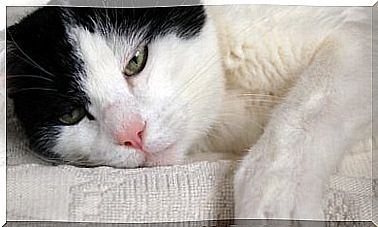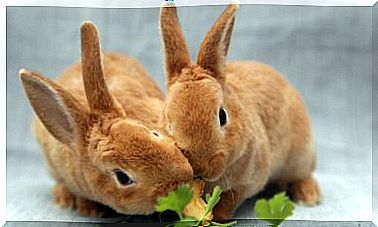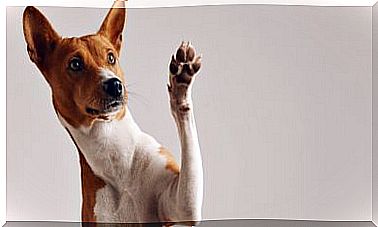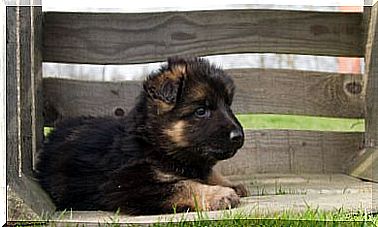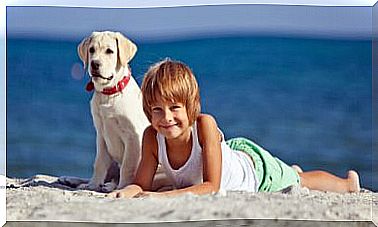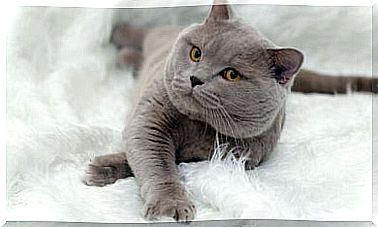Lhasa Apso: Discover Everything About This Particular Breed

Today we are talking about the Lhasa Apso. It is a breed whose most emblematic characteristic is its long, abundant and fine coat.
Of Tibetan origin, there is news of the existence of the Lhasa Apso since at least 800 BC . Ancient monks used them in Buddhist temples as protective and guardian dogs. They used to “share” the surveillance tasks with the Tibetan Mast.
General Characteristics of the Lhasa Apso
It is a small dog, but not a miniature. It has a longer body than it is tall and has short legs. Sy belly stays pretty close to the ground. His height is between 25 and 28 centimeters, while his ideal weight is between 8 and 9 Kg.
It is often confused (even some veterinarians fall into this error) with another millennial breed whose origin is also located in Tibet: Shih Tzu. The differences between one and the other are that the Lhasa Apso have a narrower skull and their eyes are less prominent. Meanwhile, his “countrymen” have a barrel-shaped rib cage. Also the distance between its belly and the legs is smaller.
Another striking feature of these dogs is a prominent fringe that falls on their face, keeping the eyes completely hidden. However, the eyeballs are safe thanks to individual eyelashes that keep the hairs out.
Their abundant fur has a very important “evolutionary reason “. As inhabitants of the roof of the world, they need extra protection against low temperatures and strong solar radiation. This is generated not only by the direct incidence of the rays of the Astro Rey, but also by the reflection generated by the large portions of land covered with bright white snow.
The range of colors of their hairs includes: sand, honey, gold, black, gray or bicolor (white and another, which is usually golden).
Despite their short stature, Lhasa Apso are stocky dogs with well-built and defined muscles.
Lhasa Apso personality
Gone are the years when they were watchdogs. But that information is still present in your genes.
Due to their short stature , they have been “reassigned” to work as companion dogs. Even so, they will never behave like lap dogs.
On the other hand, not only due to its reduced stature, but also because of its tender and even affectionate appearance, it is often believed that it is a breed that could get along well with young children. But that is only appearance. Many breeders do not recommend that families with small children adopt these dogs. The Lhasa Apso often treat the little ones in the house as a potential threat.
A very marked character
There are also those who consider it to be a breed with a difficult personality. Meanwhile, their defenders allege that they are often misunderstood animals. Beyond the above, they are dogs that adapt without major inconvenience to family life, even in small apartments.
Lhasa Apso puppy owners are encouraged to encourage socialization with other dogs and people beyond their family nucleus from an early age . Later, in adulthood, they tend to be independent animals that tend to “pass” from social interaction, show extreme dominance with other canines or very distrustful in the presence of strangers.
It is an intelligent and stubborn breed in equal measure. They learn very easily (especially through positive reinforcement) to follow basic commands such as answering calls, sitting down, lying down, or staying still. However, many times they comply with these commands only when they want to, or at least that is the impression they seem to be trying to convey.
They are not dogs that demand too much physical activity. Although going out to play, going to the beach or accompanying their masters to cross long hiking trails is something that makes them happy.
Health and Care of the Llasa Apso
Their average life span is 14 years. They are usually quite healthy animals. His only vet-certified hereditary problem is Progressive Retinal Atrophy. It is a disease that can only be detected when the animal has passed adulthood. Gradually it will leave him blind.
But the detail that those who want to get a copy of this breed must really take into account is that its coat requires a lot of dedication.
Breeders claim that you should brush each and every long hair on these animals. And not once, but more than once a day to avoid knot formation. And they warn that they comb their hair three times a day. With all this, it is still quite likely that the hairs always get tangled.

